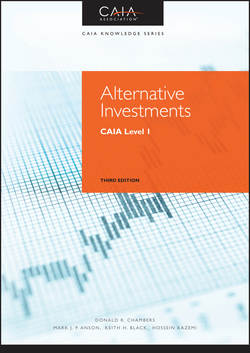Читать книгу Alternative Investments - Hossein Kazemi - Страница 56
На сайте Литреса книга снята с продажи.
PART One
Introduction to Alternative Investments
CHAPTER 3
Quantitative Foundations
3.5 Distribution of Cash Waterfall
3.5.7 Soft Hurdles and a Catch-Up Provision
ОглавлениеA soft hurdle rate allows fund managers to earn an incentive fee on all profits, given that the hurdle rate has been achieved. Returning to the example of a one-year $10 million fund with a hurdle rate of 10 % and profits of $2 million, a soft hurdle rate of 10 % allows the fund manager to receive 20 % of the entire $2 million profit, or $400,000. As long as the resulting share to the limited partners allows a return in excess of the hurdle rate, then the hurdle rate can be ignored in terms of computing the incentive fee. The limited partners receive $1.6 million, which is a 16 % return.
The soft hurdle in this case allows the fund manager to receive an incentive fee on the entire profit. A soft hurdle has a catch-up provision that can be viewed as providing the fund manager with a disproportionate share of excess profits until the manager has received the incentive fee on all profits. The sequence of cash distributions with a soft hurdle rate is as follows:
■ Capital is returned to the limited partners until their investment has been repaid.
■ Profits are distributed only to the limited partners until the hurdle rate is reached.
■ Additional profits are split, with a high proportion going to the fund manager until the fund manager receives an incentive fee on all of the profits.
Once the fund manager has been paid an incentive fee on all previous profits, additional profits are split using the incentive fee. This is called a catch-up provision.
APPLICATION 3.5.7A
Fund A with an initial investment of $20 million liquidates with $24 million cash after one year. The hurdle rate is 15 %, and the incentive fee is 20 %. What is the distribution to the fund manager if the fund uses a hard hurdle? What is the distribution to the fund manager if the fund has a soft hurdle and a 50 % catch-up rate?
The first $20 million is returned to the limited partners in both cases. With a hard hurdle, the limited partners receive the first $3 million of profit, which is 15 % of the $20 million investment. The fund manager receives 20 % of the remaining profit of $1 million, which is $200,000. The limited partners receive 80 % of the remaining $1 million, which is $800,000, for a total profit of $3.8 million. With a soft hurdle, the limited partners receive the first $3 million of profit, which is 15 % of the $20 million investment. To fulfill the catch-up provision, the fund manager receives 50 % of the remaining profit up to the point of being paid 20 % of all profit. In this case, 50 % of all of the remaining profit, or $1 million, is $500,000. Since $500,000 is less than 20 % of the entire $4 million profit, the fund manager is unable to fully catch up. Had the total profits exceeded $5 million, the catch-up of the fund manager would have been completed. With $5 million of profit, the GP would receive 50 % of the profits above $3 million, or $1 million (50 % of the $2 million profit in excess of the profit necessary to meet the hurdle rate for the LPs). The $1 million of catch-up equals 20 % of $5 million. Profits in excess of $5 million would then be split 20 % to the fund manager and 80 % to the limited partners.
